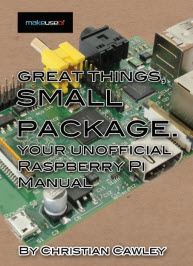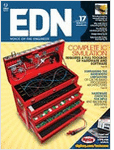How To Reliably Protect CMOS Circuits Against Power Supply Overvoltaging
TRANSIENT VOLTAGE SUPPRESSORS
In order to provide adequate protection, the protecting element needs to have e very fast response time to voltage spikes or transients. Devices which are ideal for this function are transient voltage suppressors orTransZorbe*). TransZorb suppressors are PN Silicon nensient voltage suppressors that are characterized by their surge handling capability, their extremely fast response time and low series resistance. Their response time can be as low as 1nS while their clamping ratio (ratio of clamp voltage to nominal voltage} is low. The manner in which the TransZorb is used to protect the device depends on the actual application, and a number of different situations are discussed in the following sections. In all cases, the TransZorb should be placed as close as possible to the device it is protecting to reduce the resistance between the Trenszorb and the device.
Single Supply Systems
The first case is where the CMOS device to be protected is operated from s single power supply rail. Obviously, in this case, the breakdown path is between the single power supply rail and the ground rail of the device. ln such cases, a single transient suppressor, connected between the rail and ground as per Figure 2, is sufficient to reliably protect thee device from turn-on and turn-off transients. This single Transzorb will protect the device from transients on either the power supply rail or on the ground rall by clamping the voltage differential between them. The Transzorbs come in s variety of dlfferent voltage ratings, and Teble l gives the recommended TransZorb part number for some commonly used power supply voltages.
Dual Supply System
The second case is where the device ls powered from two supply rails. In this case. a number of potential breakdown paths exist. The first is between the positive and negative supply rails. The second between the positive supply rail and ground and the third between the negative supply rail and ground. For dual supply systems there are two possible protection schemes.
For some cases, s single Transzorb, connected between the two supply rails as In Figure 3, is sufficient to protect the device. In this case, the TreneZorb voltage rating is equal to the sum of the two power supply voltlees.
*)Transcorb is s registered trademark of General Semiconductor Industries, inc.



This single TrsnsZorb arrangement assumes that when a aplke occurs on one ofthe supplies that the other supply presents a low output impedance. It also assumes that the supplies are capable of sinking or sourcing the additional current which flows when a spike occurs. lf these assumptions hold, then all three breakdown paths are protected when the spikes occur on either of the power supplies. For example, if the positive supply is +5 V and the negative supply is -15 V, the TransZorb rating will be 20V. Assuming there is a +15V spike on the +5V supply, the TransZorb will react to this by absorbing the spike and sinking the current down to the -15 V supply. This means that the -15V supply must be able to sink the additional current. If it can, the -15 V supply will not move from its -15V level during the spike, and the TransZorb will ensure that the positive supply will not be more than 20V above this. This means that the positive supply does not move above +5 V, the negative supply does not move from -15 V, and all three breakdown paths are protected. Table II gives some examples of recommended TransZorba for a number of common dual power supply voltages.






